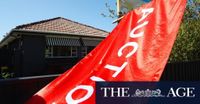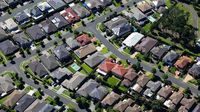The Albanese government has announced a significant expansion of its Help to Buy scheme, aiming to make housing more accessible for Australian first home buyers in what is considered one of the world’s most expensive housing markets.
In a move that adds $800 million to the scheme, the government is lifting income caps and offering increased assistance to families seeking their first home. Under the revised framework, individuals will be able to earn up to $100,000, while couples can earn a maximum of $160,000 to qualify for the program. This change is set to go into effect on March 21, 2025.
“We’re tackling the housing crisis head-on by building more homes, using new technologies, and making it easier for Australians to buy them,” Housing Minister Clare O’Neil stated. The newly adjusted income and property price caps align with the government’s goal of making it easier for ordinary working-class Australians to purchase homes.
The Help to Buy scheme allows the federal government to contribute 30 to 40 percent to the purchase price of a new or existing home, which means that first home buyers would only need to take out a mortgage covering 60 to 70 percent of the property’s value. For instance, if a house in Sydney costs $1.3 million, the government could cover $520,000 of that price, making it more financially feasible for buyers to enter the market.
Previously, the income limits for the program had capped individuals at $90,000 and couples at $120,000. This expansion is expected to open the door for many new applicants, particularly single parents, who will now qualify for the first time under the new income thresholds.
Moreover, the increasing property price caps will greatly benefit families looking to settle in various states. For example, the maximum purchase price for homes in Melbourne will rise to $950,000, while Brisbane residents can aim for homes valued at up to $1 million. In Adelaide, families will be able to buy homes worth up to $900,000.
This comprehensive package is part of the Albanese Government’s broader strategy to address Australia’s booming housing crisis. With approximately 150,000 Australians having already benefitted from initial help through the program, this latest expansion could potentially allow over 5 million properties across the country to become eligible under the expanded criteria.
Alongside the efforts in the Help to Buy scheme, the government will also invest $49.3 million to support state and territory initiatives promoting prefabricated and modular home construction. This investment aims to expedite homebuilding processes and alleviate the ongoing housing supply crisis. Housing Minister Clare O’Neil highlighted that by adopting these advanced construction methods, homes could be built up to 50 percent faster than traditional methods.
“For the first time, manufacturers and homeowners will have a national certification process to cut the red tape that has been holding back the use of these techniques,” O’Neil added. By collaborating with state and federal efforts, the government intends to bolster manufacturing jobs while addressing home shortages effectively.
This substantial effort from the Albanese Government comes in response to ongoing criticism from opposition members, who have argued that the shared equity scheme may result in the government retaining ownership of more properties rather than promoting sustainable home ownership among Australians.
“Peter Dutton has committed to cutting $19 billion from housing and 110,000 homes if he’s elected. We can't wind the clock back and repeat the decade of inaction seen under the Coalition,” O’Neil remarked at a recent conference.
The Help to Buy Program serves as a cornerstone policy from Labor’s 2022 federal election campaign, and while it faced delays in approval, it has now garnered support and is set to be officially launched for applicants later this year, allowing hope for many Australians looking to secure their first homes.
With the housing affordability crisis at the forefront of political battles - both for the current government and opposition - the recently announced changes indicate a bold approach to creating pathways for home ownership.
In summary, this expansion of the Help to Buy scheme represents a proactive response to the pressing need for affordable housing in Australia and demonstrates the government’s commitment to ensuring that first-time buyers can access the market.
As interest rates rise and housing markets continue to shift, the effectiveness of these measures in enabling home ownership will be closely observed as the new criteria come into play in 2025.









